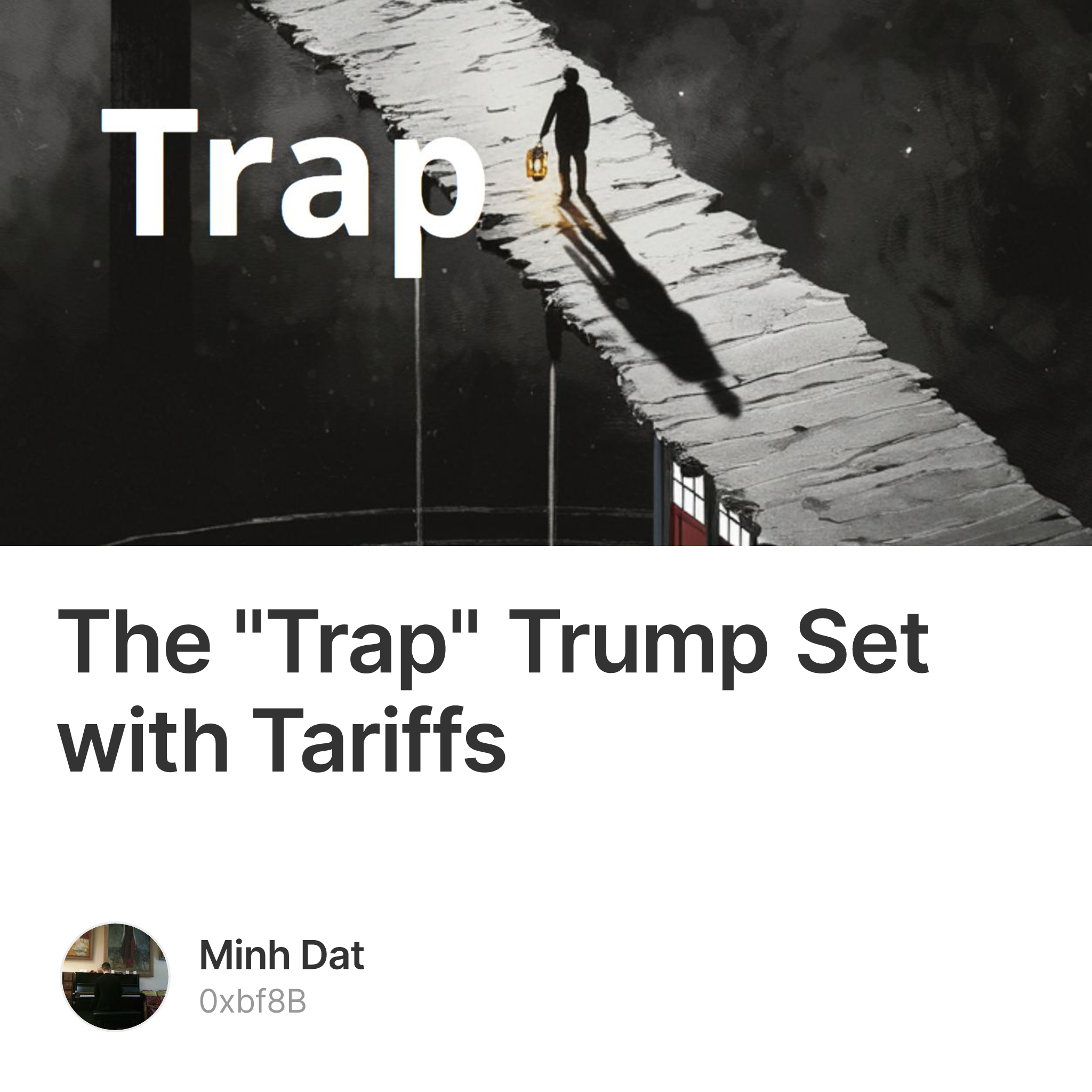When Treasury Secretary Scott Bessent says Trump “set a trap,” he’s referring to a strategic use of tariffs not just to apply economic pressure, but to provoke a predictable reaction from China that could ultimately work to the U.S.'s advantage.
Here’s how the "trap" likely works:
🪤 The Setup: Trump Raises Tariffs
Trump imposed steep tariffs on Chinese goods, signaling that the U.S. was willing to play hardball. The message to other countries was:
"If you don't retaliate, we might make a deal. But if you do, it escalates."
It was a public show of strength — a test.
🪤 The Expected Reaction: Retaliation
China, to save face and maintain its own negotiating leverage, responded with retaliatory tariffs on U.S. exports. This was a predictable move.
🪤 The Trap: Capital Flight + Manufacturing Exit
Here's where the trap closes:
-
Investor Uncertainty:
By retaliating, China deepens the trade war. Global investors get spooked. Foreign capital starts fleeing China in search of safer markets (like the U.S., which was growing strongly at the time). -
Manufacturing Shift:
U.S. companies and multinationals, seeing rising costs and instability, begin moving supply chains out of China to other countries (e.g., Vietnam, Mexico, India). This weakens China’s role as the “world’s factory.” -
Self-Isolation:
By retaliating, China appears aggressive or confrontational — reducing its appeal as a reliable trade partner.
🪝 Why It’s a “Trap”
The U.S. could have tolerated some short-term pain (tariffs increase prices for consumers), but the long-term damage to China's economic positioning — via capital flight, supply chain relocation, and reputational damage — was asymmetrically greater.
China couldn’t afford not to retaliate politically, but doing so triggered deeper economic vulnerabilities — exactly what the U.S. may have wanted.
Summary
Trump's trap was psychological and economic:
-
Psychological: Use China's need to retaliate against it.
-
Economic: Push companies and capital to reconsider China as a dependable partner.
And once China retaliated — the trap “sprung.”

